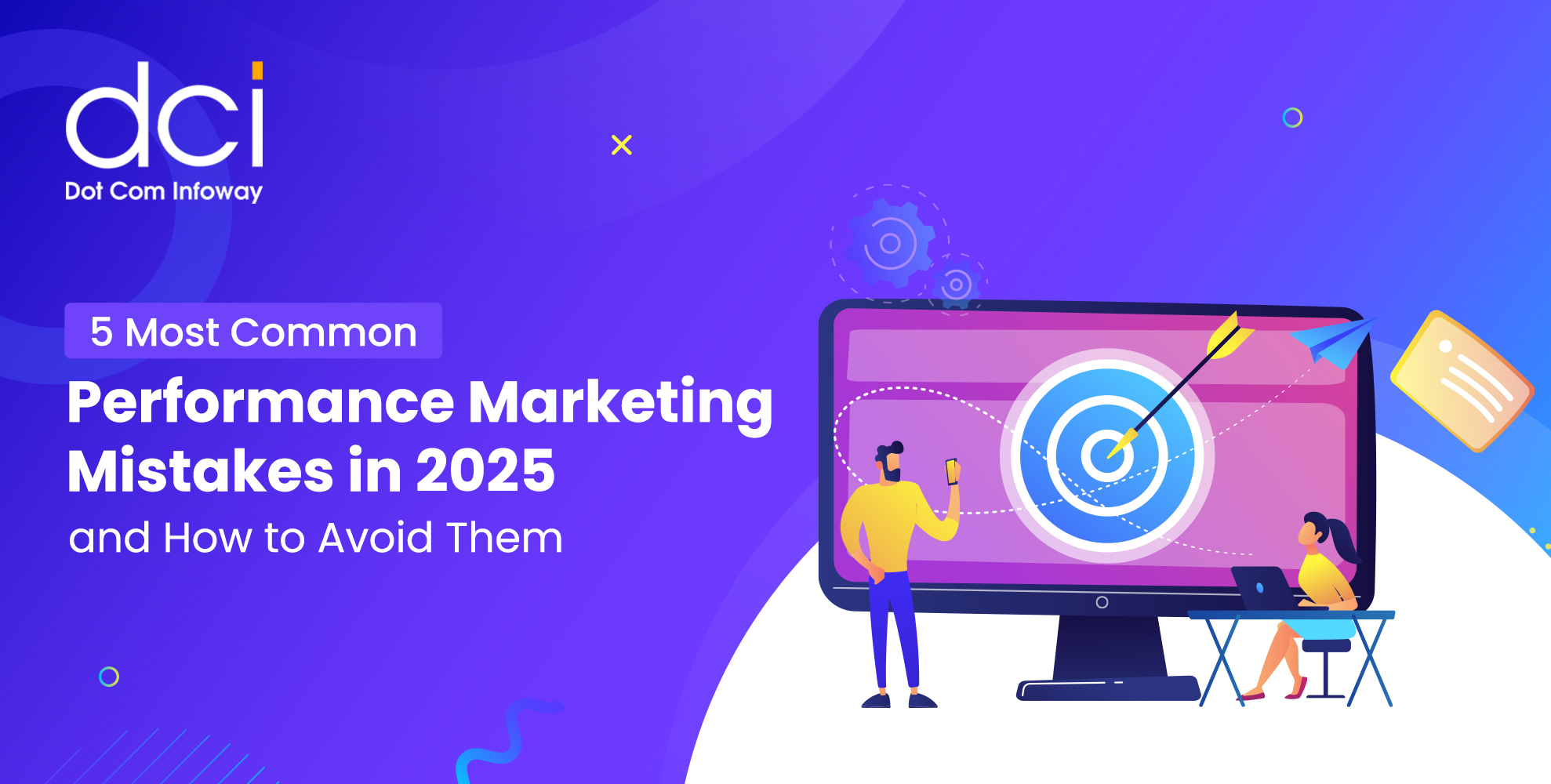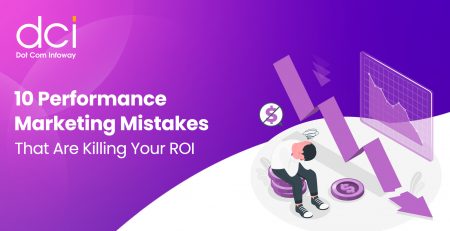5 Most Common Performance Marketing Mistakes in 2025 and How to Avoid Them
Performance marketing has become the cornerstone of modern digital campaigns. By focusing on measurable outcomes like clicks, leads, and conversions, businesses worldwide have redefined their approach to advertising. But even with its widespread adoption, many marketers still face avoidable challenges that hinder the potential of their campaigns. Let’s dive into the five most common performance marketing mistakes in 2025 and explore how you can sidestep them to maximize your results.

Introduction
Performance marketing continues to revolutionize digital advertising, offering unparalleled opportunities to scale campaigns and achieve data-driven results. Yet, like any field undergoing rapid evolution, it presents challenges for marketers who fail to keep up with its nuances. As we step into 2025, staying ahead means knowing what pitfalls to avoid. Whether you’re an experienced professional or a budding marketer, understanding these mistakes can save you time, money, and effort. Let’s uncover the key insights you need to ensure your campaigns thrive in today’s competitive landscape.
Lack of Clear Goals and KPIs
One of the most frequent mistakes in performance marketing is launching campaigns without clearly defined goals or key performance indicators (KPIs). It’s tempting to dive into execution, especially with deadlines looming, but this can set your campaign up for failure. Without a clear understanding of what you want to achieve—be it brand awareness, lead generation, or e-commerce sales—you risk wasting valuable resources.
For example, consider a retailer running a holiday sales campaign. Without setting KPIs like cost-per-acquisition (CPA) targets or desired conversion rates, their team might pour money into ads that attract clicks but don’t generate revenue. To avoid this, start every campaign by defining SMART (Specific, Measurable, Achievable, Relevant, Time-bound) goals and aligning them with your business objectives. This ensures every dollar spent contributes to tangible results.
Over-Reliance on One Marketing Channel
In 2025, the digital landscape offers more marketing channels than ever before. However, many performance marketers make the critical mistake of relying too heavily on one platform. Whether it’s Google Ads, Facebook, or TikTok, putting all your eggs in one basket exposes your campaigns to unnecessary risk.
For instance, algorithm updates or policy changes can significantly impact the performance of your chosen channel. A business that depends solely on Facebook Ads could find its traffic plummet if targeting capabilities are restricted. To mitigate this risk, diversify your marketing efforts across multiple platforms. Consider exploring emerging options like programmatic advertising, influencer collaborations, or even niche platforms tailored to your audience. This way, you’ll safeguard your campaigns from sudden disruptions and broaden your reach.
Ignoring Data and Analytics
Data is the backbone of performance marketing, but many marketers still fail to leverage it effectively. It’s not uncommon to see campaigns running without thorough analysis of metrics like click-through rates (CTR), cost-per-click (CPC), or customer lifetime value (CLV). Without actionable insights, you’re essentially flying blind, making it nearly impossible to optimize performance.
Imagine a scenario where an e-commerce brand notices high traffic but low conversions on its product pages. Instead of addressing the issue—perhaps a confusing checkout process or poorly targeted audience—they continue spending on ads that don’t drive results. To avoid this, invest in robust analytics tools and regularly review campaign performance. Platforms like Google Analytics, HubSpot, and Facebook Business Suite can provide granular data to guide your decisions. Use A/B testing to experiment with ad creatives, landing pages, and offers, ensuring your campaigns are always improving.

Ready to maximize your performance marketing ROI in 2025?
Avoid common mistakes and ensure your campaigns deliver impactful results with DCI’s expert insights and proven strategies for success!
Neglecting Mobile Optimization
Mobile usage is projected to dominate digital interactions in 2025, yet many marketers still overlook the importance of mobile optimization. Campaigns designed for desktop users often fail to deliver the same experience on mobile, leading to lost opportunities. From slow-loading landing pages to poorly formatted ads, the consequences of ignoring mobile users are significant.
Consider this: A travel agency running a Google Ads campaign directs users to a landing page that isn’t mobile-friendly. Visitors struggle to navigate the site, resulting in high bounce rates and wasted ad spend. To prevent such scenarios, prioritize mobile-first strategies when designing campaigns. Optimize your landing pages for speed, usability, and readability on smaller screens. Additionally, ensure your creatives—whether videos, images, or text—are tailored to mobile viewing preferences.
Failing to Adapt to Privacy Regulations
Privacy laws have become a major concern for marketers in recent years, and their impact will only grow in 2025. Regulations like GDPR, CCPA, and the phasing out of third-party cookies have reshaped how businesses collect and use data. Unfortunately, many marketers still fail to comply, risking fines, reputation damage, and diminished trust among customers.
For example, a SaaS company running retargeting campaigns might find itself unable to track users effectively due to cookie restrictions. Without adapting its approach, such campaigns may deliver diminishing returns. To navigate this challenge, invest in privacy-compliant strategies like first-party data collection, contextual targeting, and server-side tracking. Educate your team on emerging regulations and work closely with legal experts to ensure compliance at every step.
Performance Marketing Mistakes in 2025
Avoiding performance marketing mistakes requires a combination of strategic planning, adaptability, and a willingness to learn from past experiences. As we’ve explored, common pitfalls like unclear goals, channel over-reliance, neglecting analytics, poor mobile optimization, and failure to comply with privacy laws can derail even the most promising campaigns. However, by staying proactive and embracing best practices, you can turn these challenges into opportunities for growth.
Conclusion
Performance marketing in 2025 offers vast potential, but it’s not without its challenges. By understanding and avoiding common mistakes, you can craft campaigns that deliver exceptional results. Embrace clear goal-setting, diversify your channels, prioritize analytics, and adapt to evolving trends like mobile usage and privacy laws. Success in performance marketing isn’t about avoiding failure altogether—it’s about learning, iterating, and continuously improving your approach.















